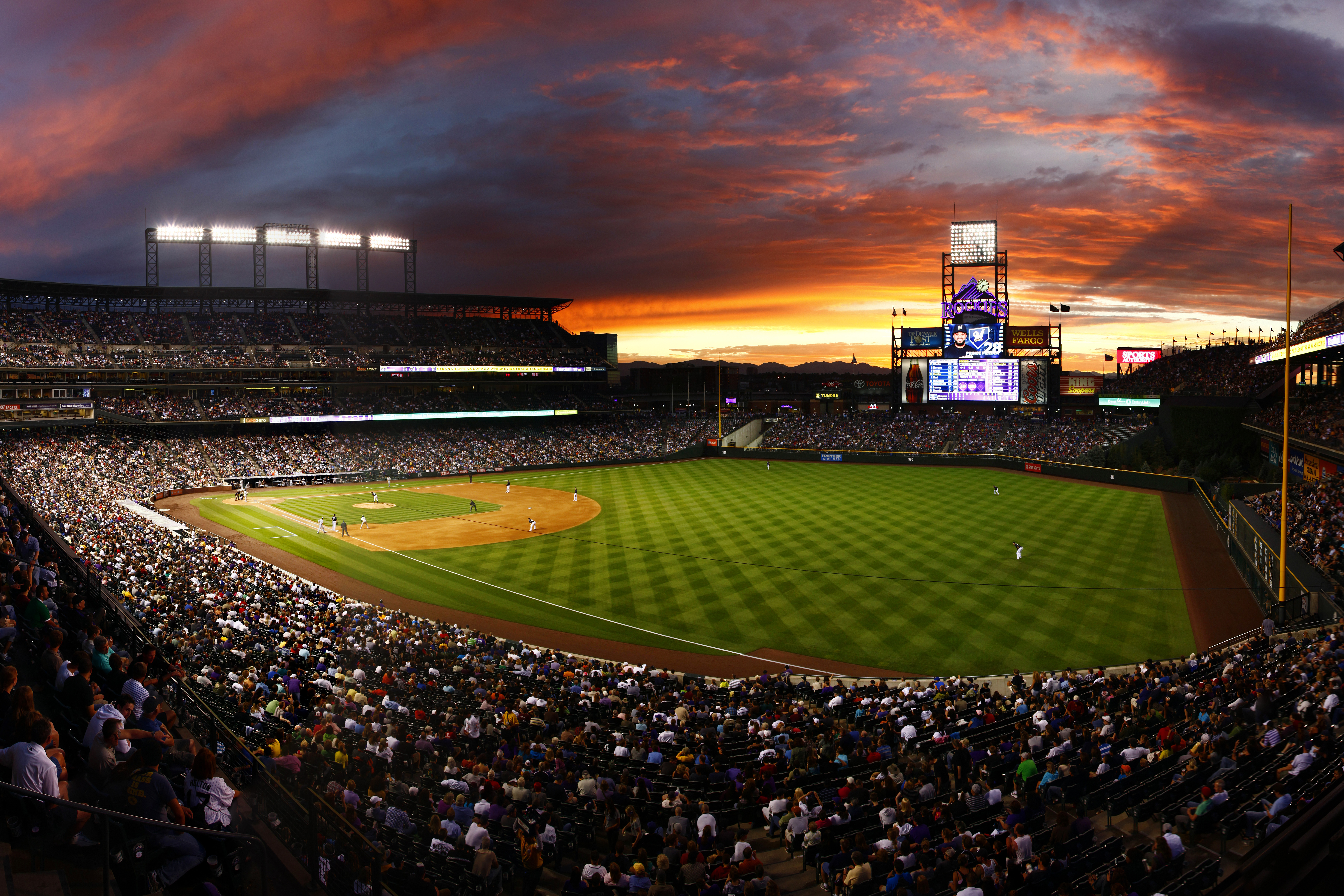Coors Field: pitchers hate it, batters love it. That’s because the home of the Colorado Rockies is Major League Baseball’s highest-altitude ball field, a fact that can change the game for the better or for the worse depending on whether you’re in the batter’s box or on the pitcher’s mound.
 At nearly a mile high — the row of purple seats in the upper deck of the stadium is exactly 5,280 feet above sea level — Coors Field forces players to take a unique set of physics into consideration. For those heading up to bat, the altitude is a boon. Colorado’s light, dry air often turns would-be fly balls into home runs. To account for this, the outfield fences were placed farther from home plate than usual, creating one of the largest outfields in major league baseball.
At nearly a mile high — the row of purple seats in the upper deck of the stadium is exactly 5,280 feet above sea level — Coors Field forces players to take a unique set of physics into consideration. For those heading up to bat, the altitude is a boon. Colorado’s light, dry air often turns would-be fly balls into home runs. To account for this, the outfield fences were placed farther from home plate than usual, creating one of the largest outfields in major league baseball.
But this larger outfield also resulted in more doubles and triples, and Coors Field still gained a rep as a home run-friendly park. That is, until the introduction of the humidor.
Taking a cue from the cigar world, the Rockies installed a room-sized humidor in which to store both game and practice balls. The humidor was set to a constant 70 degrees and 50 percent relative humidity, with the goal being to increase the balls’ weight (so they wouldn’t travel so far) and to make them softer and less reactive to the impact of the bat. And it worked! Since the introduction of the humidor in 2002, the average number of home runs hit in Coors Field has decreased significantly, though the park’s low air density and humidity still make it one of the best fields to hit rockets and score runs.
The same factors that make Coors Field a haven for batters make it a hell for pitchers. Not only do all those earned runs wreak havoc on pitchers’ stats (not to mention their self-confidence and stamina), but the climate also throws them a curveball when it comes to their pitching repertoire. Or, rather, it takes one away, since the thin air causes curveballs to “break” less, making them a less effective pitch here than in other locations.
The altitude has also been blamed for a higher-than-average injury rate for pitchers, which the Rockies have sought to remedy in the past by swapping out pitchers more frequently. And the reduced oxygen levels mean a longer recovery time for all players after a long inning on the mound or a trip around the bases — so much so that training and front office staff recently floated the idea of converting the Rockies clubhouse into an oxygen-rich hyperbaric chamber to help players recover more quickly.
Oh — and there’s one more high-altitude climate consideration for anyone playing at Coors Field: snow. With spring training beginning in February and the regular season stretching into October (and potentially beyond with postseason games), the odds are high that players will have to contend with the white stuff during at least a few games each year. Luckily for the Rockies (and especially for the groundskeepers), the field sits atop 45 miles of heated cable capable of melting away snow in a matter of minutes — the first underground heating system in the major league.
Want to visit the home of the Colorado Rockies? Take a tour of Coors Field Monday through Saturday during baseball season or Monday, Wednesday, Friday and Saturday during the offseason Tours cost $10 for adults and last approximately 70–80 minutes.



